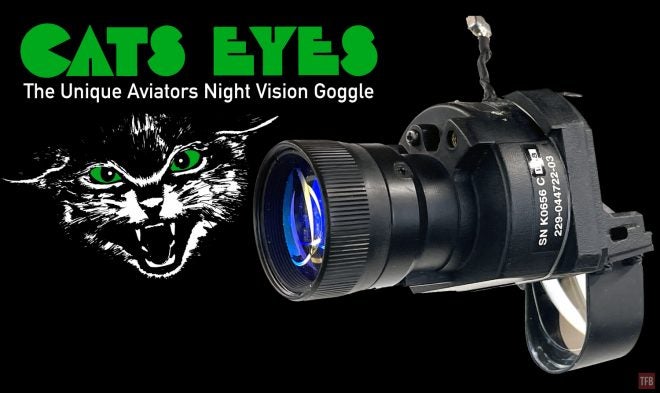Did the name of today’s Friday Night Lights catch your attention? Well, let’s go on a little trip through history about a somewhat obscure HUD window night vision goggle called CATS EYES. The font and cat logo are all original from the time period used on promotional brochures about this aviation night vision goggle.
HUD and Aviation NVG @ TFB:
- Friday Night Lights: Steiner CEHUD and COTM – PVS-21 Must-Haves
- Friday Night Lights: LPNVM PVS-21 A Steiner Tactical Monocle
- Friday Night Lights: Dual Tube Spotlight – Fenn ANVIS WFOV And They Can Explode!
CATS EYES Were The Cat’s Pajamas
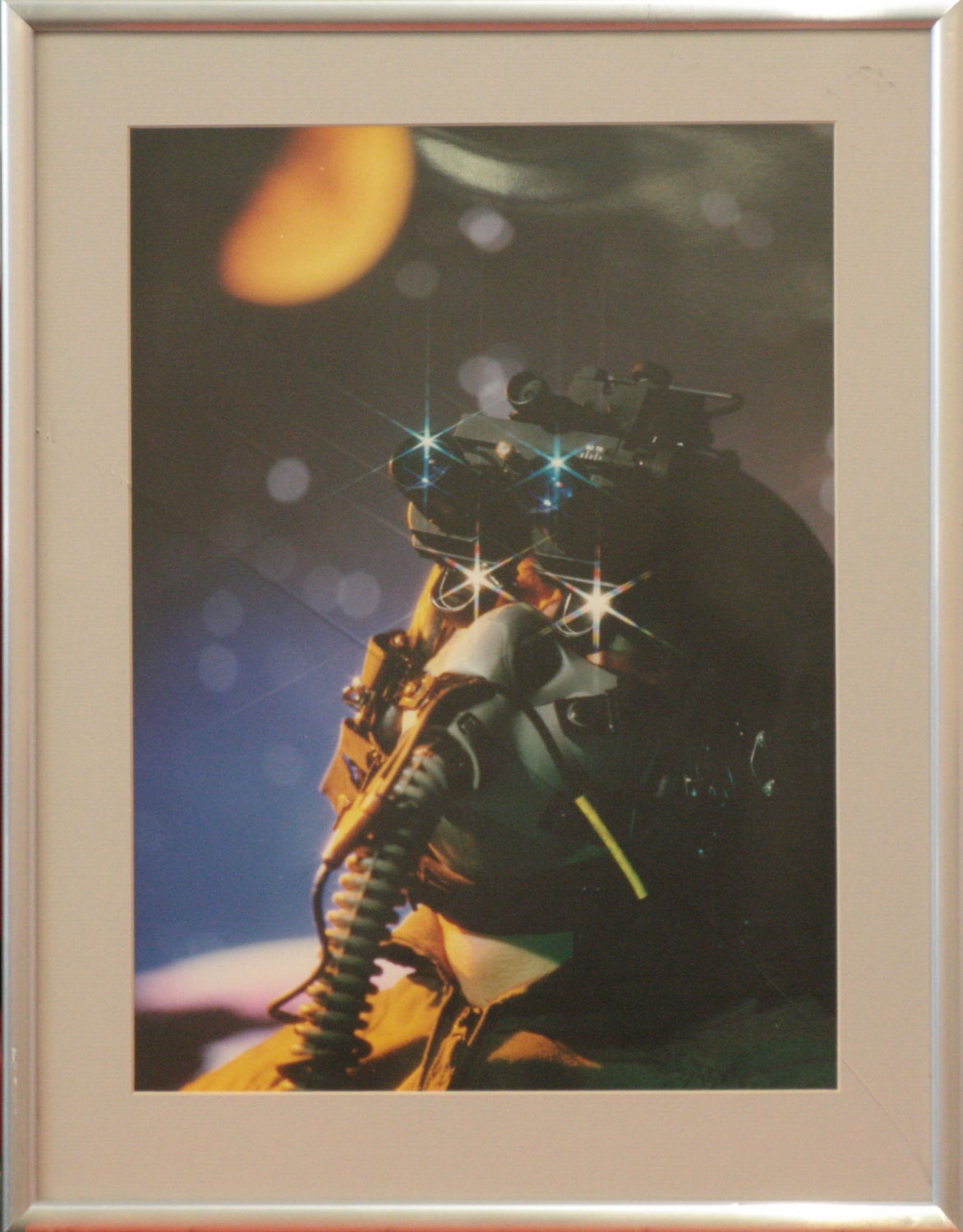
Photo from Rochester Avionics Archive
I have to say that the image above is hands down the best promotional photo for night vision I have ever seen. Peak 80s-90s aesthetic. You will notice that the CATS EYES NVG is a little different than the one at the very top. That is because the CATS EYES goggle was a binocular night vision system made in the 80s. The CATS EYES was made by a company called GEC Avionics in England. In the late 90s, they changed their name to Marconi Avionics and a year later merged with British Aerospace to form BAE Systems.
If you look at the photo below, you will notice some interesting characteristics of the CATS EYES goggle. It features a combiner which is like a beam splitter or prism. The night vision intensified image is beamed down into the combiner and bounced back towards your eyes.

Photo from Rochester Avionics Archive

Photo from Rochester Avionics Archive
We have seen similar technology in the Steiner LPNVG PVS-21. They also use a combiner to bounce the night vision image into your eye while simultaneously allowing you to see through the HUD window even if the goggle is turned off.

Photo from Rochester Avionics Archive
According to one of the brochures I found at Rochester Avionics Archive, the CATS EYES night vision goggle was used on the F-18 and AV-8B aka Harrier Jet. However, I have not found a photo of Harrier jet pilots wearing CATS EYES nor photos of F/A-18 pilots with them.
According to some of the brochures from the early 1990s, the CATS EYES NVGs used gen 3 image intensifiers. What is really interesting is that they only produce a 30º FOV compared to most night vision like PVS-14s and binocular NVGs such as the ANVIS9 that use lenses that produce 40º FOV.
Rochester Avionics Archive has an early brochure from 1982 that has some interesting early versions of the CATS EYES night vision goggle.

Photo from Rochester Avionics Archive

Photo from Rochester Avionics Archive
The page below is particularly interesting. They claim the CATS EYES produce a 45º FOV side to side. I am not sure if this is due to a panning feature like the Panobridge or RPNVG where each objective lens is angled away from each other rather than running parallel. Or perhaps the person writing this made the mistake Hollywood does, where they think binocular POV is a sideways figure eight when it is really two overlapping circles.
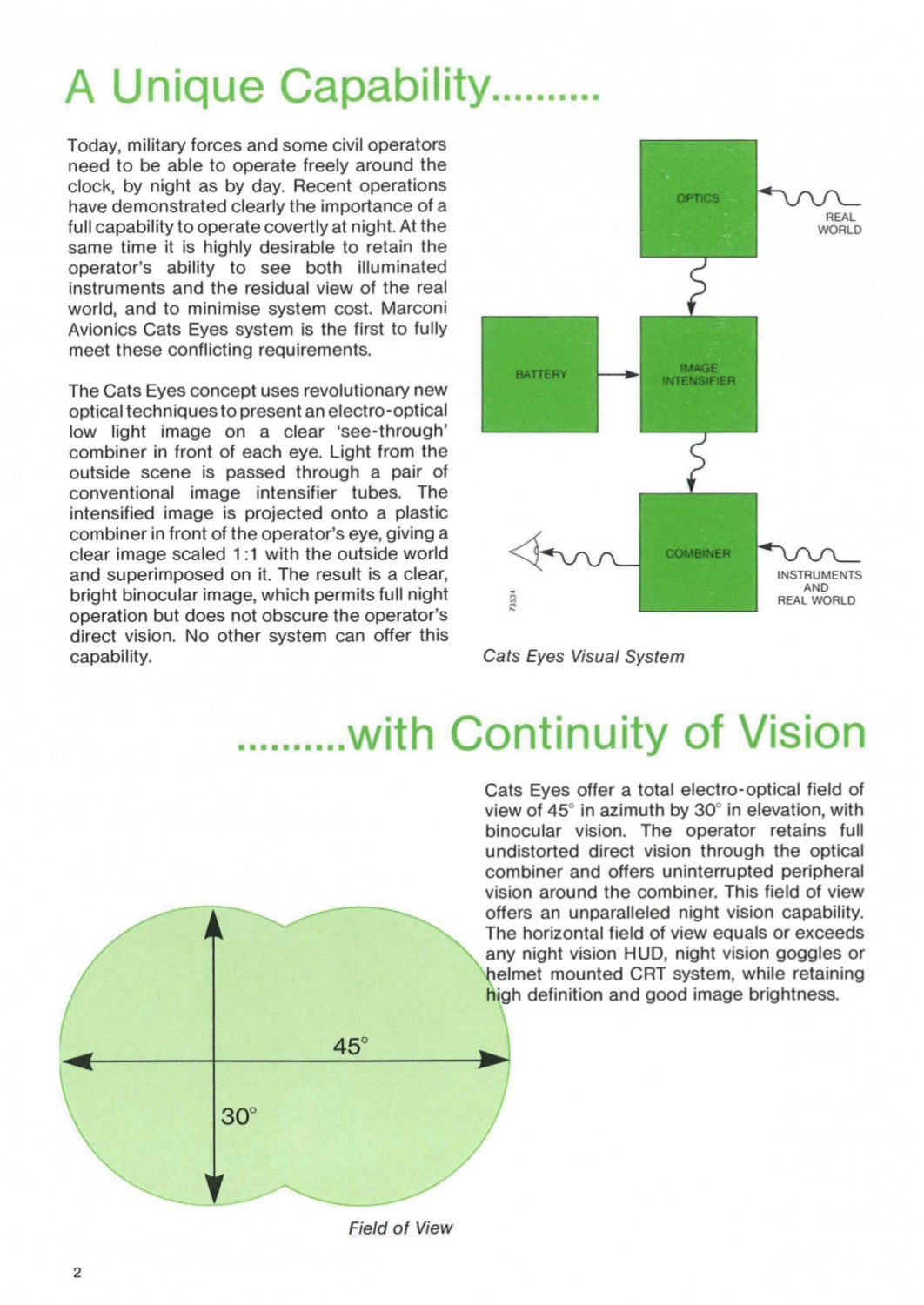
Photo from Rochester Avionics Archive

Photo from Rochester Avionics Archive
In another brochure, from 1990, there is this little graphic showing how the CATS EYES combiner HUD window works. According to this, the CATS EYES objective lens is filtered, similar to ANVIS 6/9, to block the light emitted from the plane’s HUD. But since the CATS EYES NVG has a combiner window, the actual HUD image shines through so the pilot can still read the display.
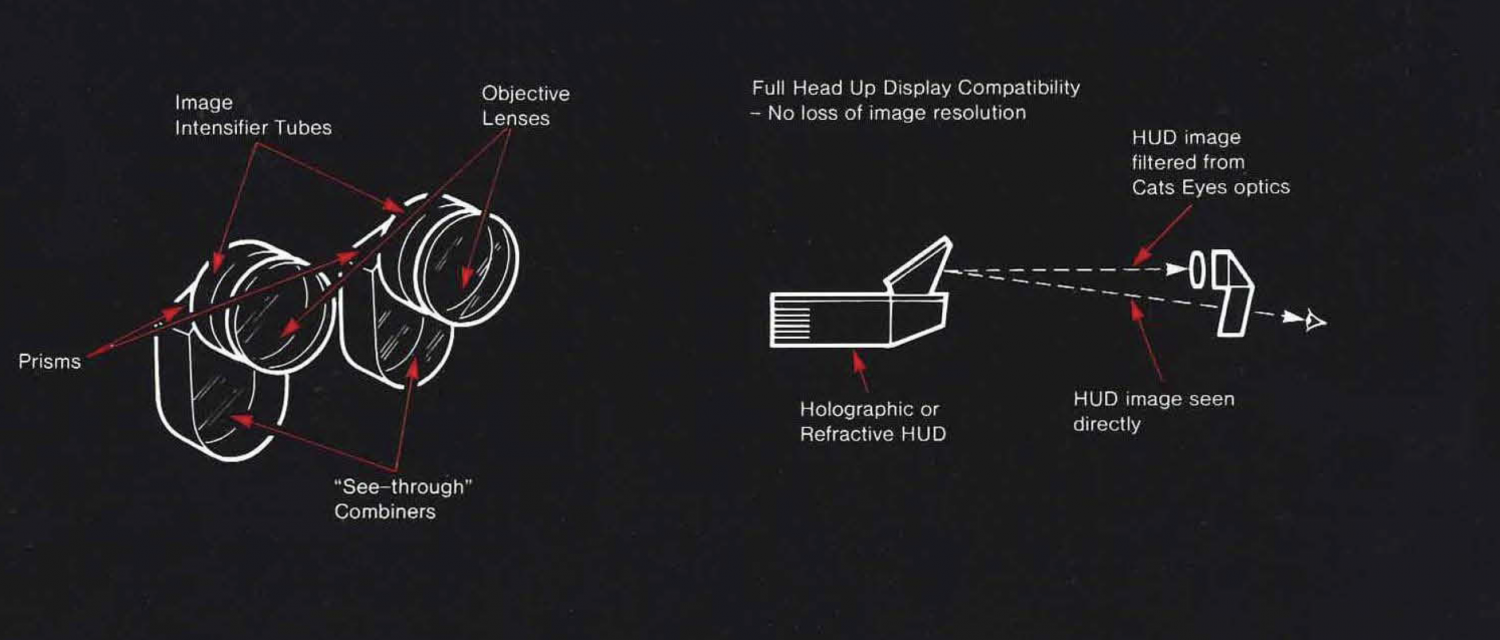
One-Eyed CATS EYE
A few months ago my friend Cajer acquired a single pod from a CATS EYE. He played with it a little and then let me buy it off him so I could check it out. It has a cable coming out the top which he had soldered some wires to it. I removed them and soldered a 9V plug so I could use a 2xAA ANVIS battery tray which I will show in a little bit.



See the brass threaded insert? There is one on each side. That is how the pods were attached to the CATS EYES bridge.

Below is a photo from Rochester Avionics Archive of some CATS EYES parts. You can see a semi-circular bracket with holes in it just below the bridge. That is what the CATS EYES pod would bolt to.

Photo by Rochester Avionics Archive
Helmet Mounting The CATS EYE Monocular
Well, although I do not have access to those parts, I still wanted a way to mount the CATS EYES monocular to a helmet. So I built a bracket and bolted a dovetail to it.
Here I was checking if the pod would clear my Wilcox mount while still keeping the combiner window in front of my eye. Looks like there is enough room.

Even before seeing the parts photo from Rochester Avionics Archive, I planned to use the threaded holes in the front of the housing to attach the bracket I had planned in my head. I used cardboard to pattern the holes and mock up the semi-circular cut-out below the screws.

I used a piece of 90º angle aluminum. Traced the cardboard pattern onto it and cut it with a drill, step bit, and belt sander. I used a spare Florian Winkler dovetail since it has two holes so it won’t rotate like a Wilcox dovetail.
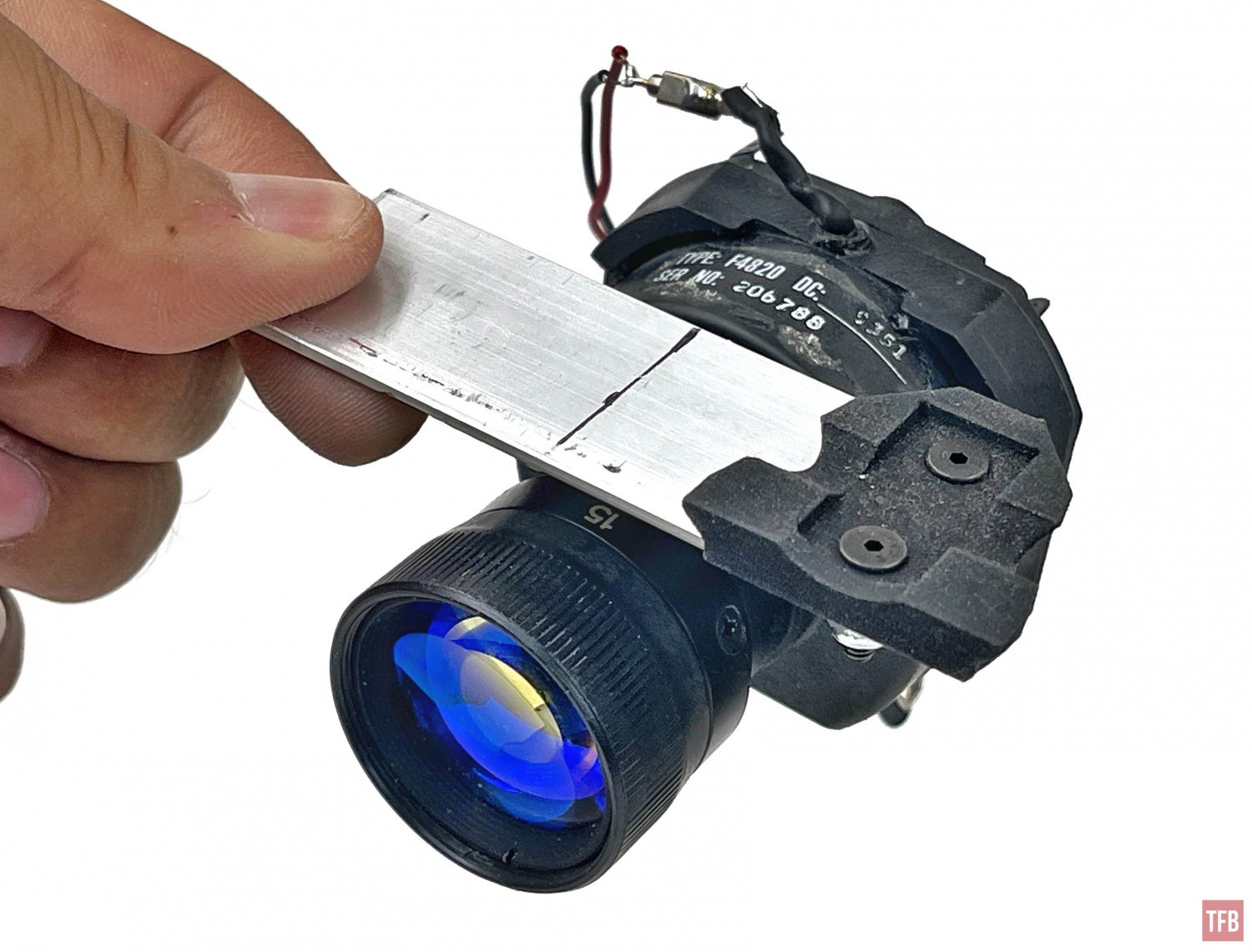

It is not pretty but it works. I made the bracket wide enough that I could bolt on another dovetail to the other side in case I want to move the CATS EYES monocular to my left eye. But at this moment I have not added that secondary dovetail.

The problem is the 9V cap that I soldered to the CATS EYES lead is not very long. But It can reach up and snap onto the ANVIS9 battery tray. I stuck hook velcro onto the back of the battery tray, ran the wires under the tray but between the velcro so the 9V cap can snap onto the battery tray. As soon as the cap makes contact the monocular turns on. I have not wired a switch to it yet.


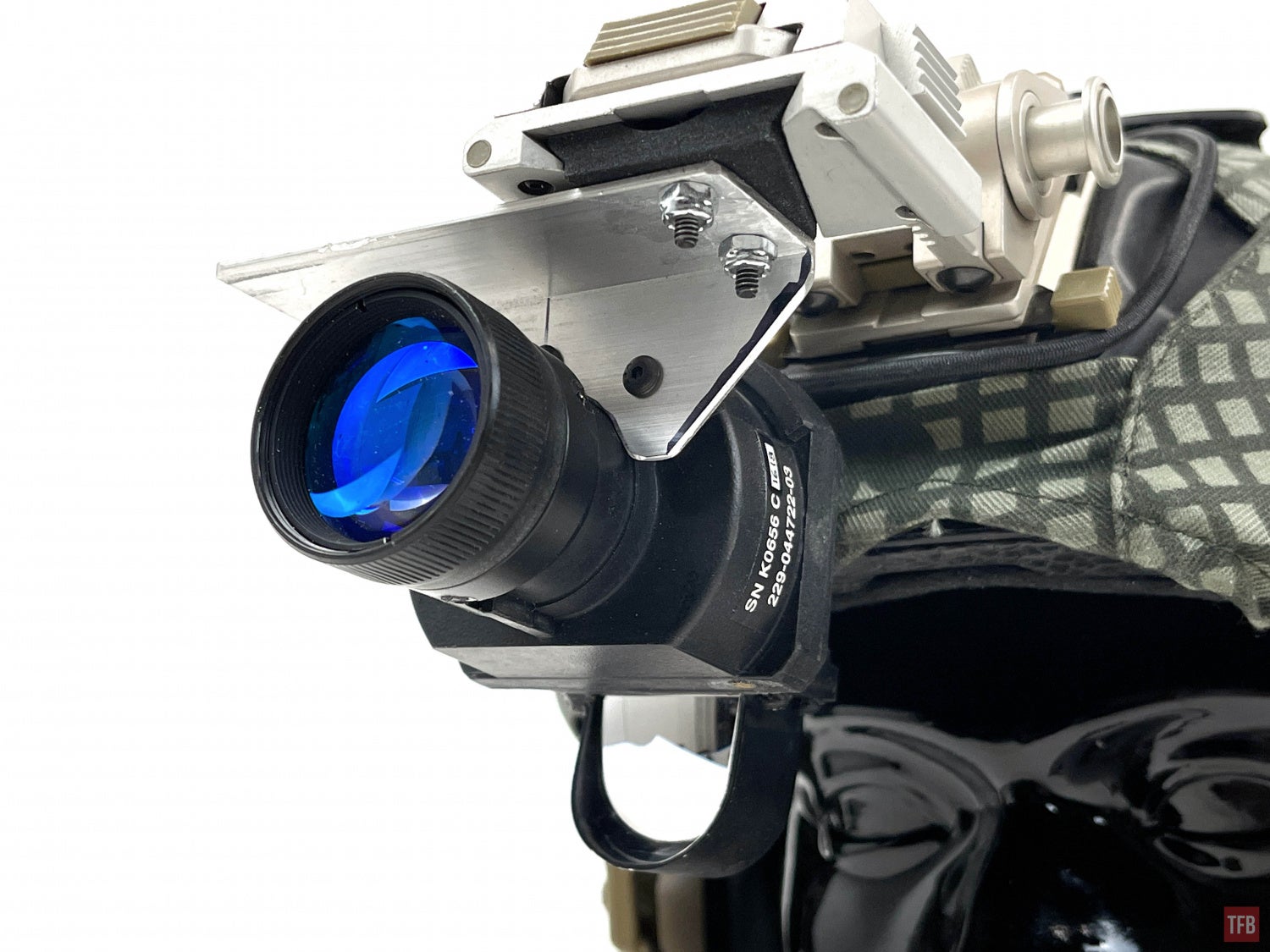
I cannot bring the CATS EYE monocular closer to the eye since it will hit the helmet. But the distance seems adequate.


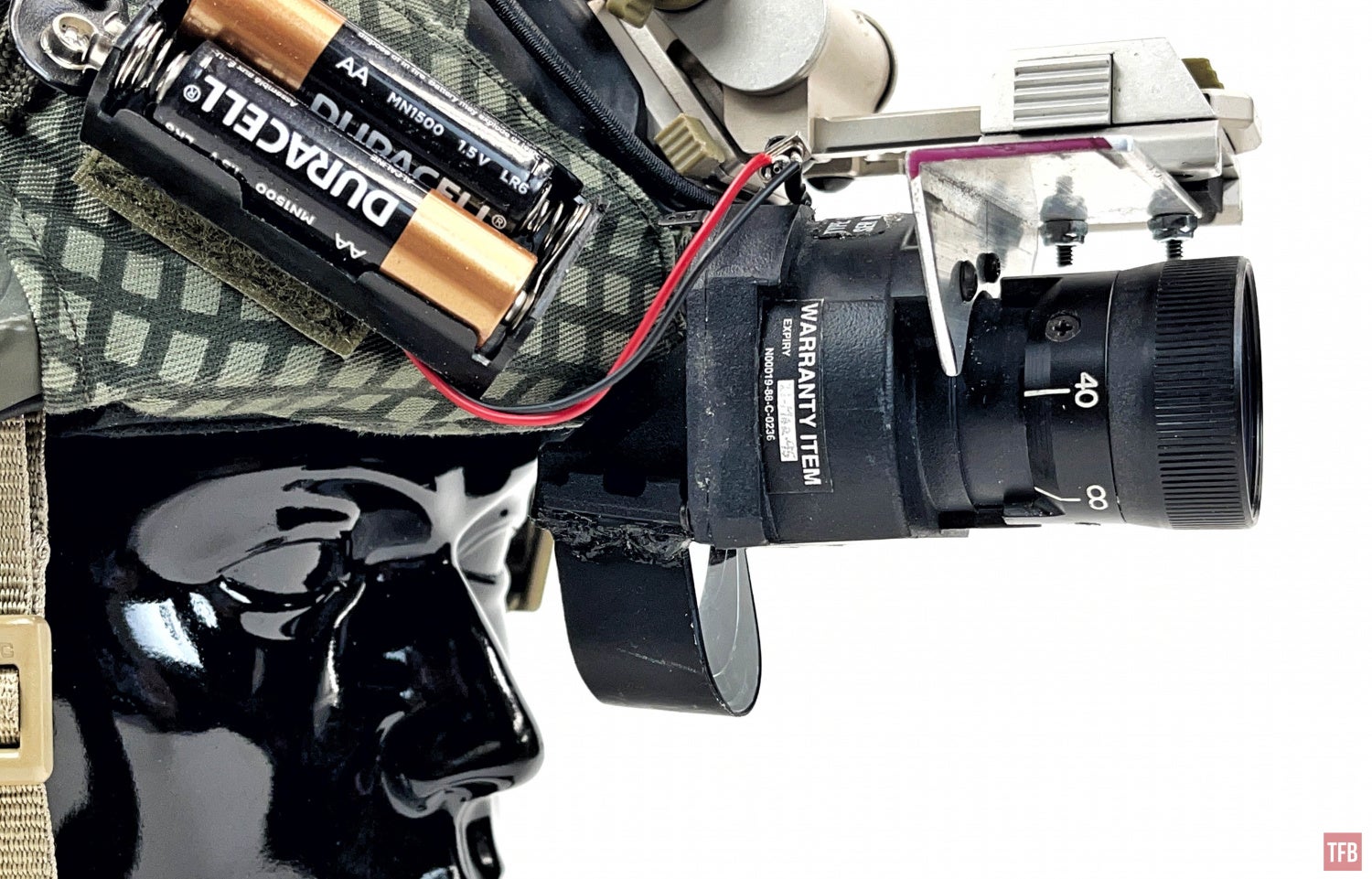
CATS EYES NVG For Ground Use
Since the combiner HUD window is transparent, you can see through it comfortably when the image intensifier is turned off. There is a bit of light lost coming through the combiner window.

One major benefit to the CATS EYES design is the fact that all the night vision components are above your FOV. Compare that to the PVS-21 where you have bits of housing blocking some of your peripheral vision. That is not the case with the CATS EYES. Look at the image below. Other than my hand holding the goggle and thus blocking the image, you can see all around the sides and bottom of the combiner window.

Another added benefit is what GEC Avionics was promoting. The ability to see color through the window. Here I positioned an EOTECH HWS in front of the combiner window. You can see the red reticle clearly. This is because the reticle is shining through the window but not through the objective window so the image intensifier is not trying to amplify the light from the reticle. Since the red dot will shine clearly through the window, you do not need NV settings for your red dot. You can keep it day bright and as long as you don’t shine it into the objective lens, it will be fine.

Final Thoughts On The CATS EYE Monocular
I have some ideas to improve the helmet mount. But it may require the help of some 3D printing friends. I want to mount the objective lens central under the Wilcox mount and have a dovetail arm that will allow the CATS EYE to rotate on the lens axis. This would swing the combiner window into position of my eye. That way I do not have to switch from dovetail to dovetail but just rotate the arm to bring the window to each eye. I will upgrade the 9V plug to a LEMO plug so I can use actual ANVIS battery packs since they have a switch built into the battery packs, then I can turn the CATS EYES NVG on and off without having to unplug it.
With regards to the historical use of these for Hornet and Harrier jet pilots, I have yet to see any evidence of this. If anyone was or knows of Hornet and/or Harrier UK pilots from the 90s, please ask if they used a CATS EYES NVG.
 Your Privacy Choices
Your Privacy Choices
